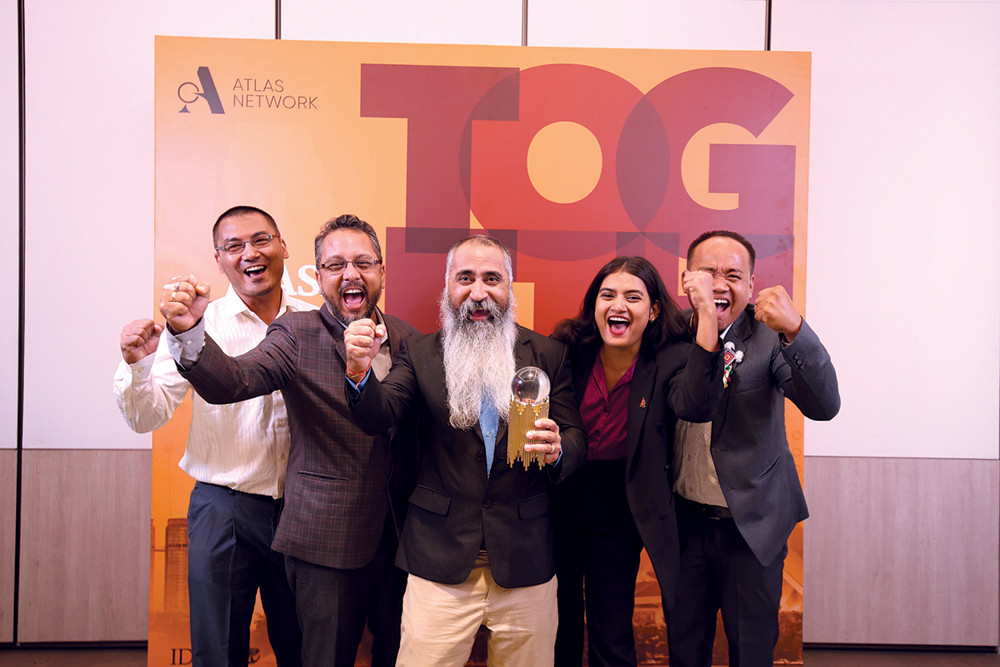
The term ‘smart city’ is not a new concept for Nepalis who live in the country’s urban areas. Most commonly, it has long been used by urban planners while planning solutions for cities’ multiple problems caused due to increasing rural to urban migration and subsequent haphazard urbanisation practices across major towns in the country. However, during April – May 2017, Nepalis in rural parts of the country also got a chance to hear this term, if not fully understand the concept, thanks to first phase of country’s local election on May 14. With only a few exceptions, candidates across three provinces, mainly those contesting in four metropolitan, one sub-metropolitan and 92 municipal elections, had pushed for a smart city agenda in their political manifestos and also during their election campaigns. It was also during this election that locals in Jumla, one of country’s most remote districts, too heard about this idea from local municipality’s mayoral and vice mayoral candidates for the first time.
But in reality, Nepali politicians and public office bearers hold poor records when it comes to implementation of already committed projects. Beginning FY 2015/16, the government has been making plans and allocating budgets for transforming some of the country’s cities into smart cities and also creating few new cities. However, progress so far proves authorities’ incompetency and inadequate dedication towards their own committed projects. Thus, we are yet to see whether newly elected officials at local bodies would be able to achieve their ‘smart cities’ goals or not. But while we wait for them to take oath to office and start working on their plans, we also need to review whether majority of the cities really need to be made smart.
There is no universally accepted definition of a smart city. Different governments, development partners and private sector actors define it as per their suitability. For example, the European Parliament’s Industry Research and Energy Committee considers information and communication technology (ICT) as a key enabler for cities in European Union to function in smart ways. The Committee defines smart city as a city that seeks to address public issues via ICT-based solutions on the basis of a multi-stakeholder, municipally based partnership. In India, the Smart Cities Mission consider smart city as a city that has core infrastructures like adequate water supply, assured electricity supply, sanitation - including solid waste management, efficient urban mobility and public transport, affordable housing - especially for the poor, robust IT connectivity and digitalisation, good governance - especially e-Governance and citizen participation, sustainable environment, safety and security of citizens - particularly women, children and the elderly, and health and education. Similarly, the United Nations relates this concept with Goal 11 of the 2030 Agenda for Sustainable Development, the Addis Ababa Action Agenda and the Paris Agreement.Likewise, tech companies like IBM and CISCO give more emphasis on capability of a city to collect and use all data from interconnected devices to better analyse and address urban problems while defining this concept. Finally, International Telecommunication Unionin 2014, after analysing 116 different definitions, defined a smart sustainable city as one that is innovative and uses ICTs and other means to improve quality of life, efficiency of urban operation and services, and competitiveness, while ensuring that it meets the needs of present and future generations with respect to economic, social and environmental aspects.
Thus, no matter how we define smart cities and wherever they are located, their basic aim remains always same, i. e., to achieve higher economic growth while easing lives of increasing numbers of urban residents. Over the past few decades, countries across the globe have seen rapid urbanisation. According to the 2016 May UN Secretary General’s Report on Smart Cities and Infrastructure, for the first time in human civilisation, there were more people living in urban areas than in rural in 2008. As per the current trends, more than 60 percent of world’s population, mostly concentrated in Asia, Africa and Latin America, will become city dwellers and this figure is expected to reach 75 percent by 2050.The new opportunities – better academic, employment, and living standards among others – to new urban population come with added costs. According to a 2015 UNEP study, though the world’s metropolises accounted for only five percent of earth’s landmass then, they consumed nearly 70 percent of global energy and also emitted the same amount of green house gases. As the numbers of urban dwellers are on rise and they are expected to increase further in decades to come, their demands for food, water, land, housing, jobs, transportation, communication and waste management facilities would also follow similar trends.
According to Nepal’s 2015-16 Economic Survey, with an average growth rate of 3.43 percent for past ten years, the country’s 42 percent population now live in urban centers and accounts for 33.1 percent of the GDP, with Kathmandu valley alone contributing about 23.4 percent. In addition, as per a 2013 World Bank report, despite inadequate urban planning and scare urban infrastructures, Nepal was one of the fastest-urbanising countries in Asia with a growth rate of up to seven percent. The same study also highlighted that Kathmandu, with growth rate of four percent, was one of the rapidly growing metropolises in South Asia and Pokhara, a metropolis in western Nepal, was also growing at an annual rate of five percent. In contrast to other metropolises in South Asia and East Asia, rapid urbanisation in Nepal has been accompanied by lower economic growth – mainly due to inadequate economic activities in urban centers and also due to volatile political conditions. As a result of this metropolises in Nepal have faced far more problems than have gained from the growth of towns across the country. For example, with rapid rural –urban migration and subsequent chaotic urbanization, Kathmandu Valley faces multiple problems including inadequate water and energy supply, poor quality of roads, unhealthy housing and waste management practices, inadequate connectivity, poor environmental regulations, increasing slums, poor governance and low economic competitiveness. These are not the problems faced by people in Kathmandu Valley alone, other major urban centers including Biratnagar, Janakpur, Bharatpur, Butwal, Nepalgunj and Dhangadhi too share many of these problems. With these issues at hand, I am not hopeful of seeing even a single genuine smart city sometime in next few years.
Though I would love to see as many competent smart cities as possible in Nepal as they not only benefit local residents but they also ameliorate the quality of goods and services delivered by respective government authorities and private sector stakeholders, I would however recommend concerned parties and representatives of local bodies to rather work on improving the quality of six major building blocks of any model city as identified by IBM – people, business system, transportation network, communication, water and energy. Once these are in place, we can work towards developing smart infrastructures as foundations for establishing 21st century smart cities in different parts of Nepal.
 Jaya Jung Mahat, an alumnus of the Lee Kuan Yew School of Public Policy at the National University of Singapore, is a Kathmandu-based public policy researcher. He writes extensively on issues that connect economics, politics and innovation. He can be reached at [email protected]
Jaya Jung Mahat, an alumnus of the Lee Kuan Yew School of Public Policy at the National University of Singapore, is a Kathmandu-based public policy researcher. He writes extensively on issues that connect economics, politics and innovation. He can be reached at [email protected]
 Jaya Jung Mahat, an alumnus of the Lee Kuan Yew School of Public Policy at the National University of Singapore, is a Kathmandu-based public policy researcher. He writes extensively on issues that connect economics, politics and innovation. He can be reached at [email protected]
Jaya Jung Mahat, an alumnus of the Lee Kuan Yew School of Public Policy at the National University of Singapore, is a Kathmandu-based public policy researcher. He writes extensively on issues that connect economics, politics and innovation. He can be reached at [email protected]
Published Date: June 25, 2017, 12:00 am
Post Comment
E-Magazine
RELATED Innovation


.jpg)


.jpg)